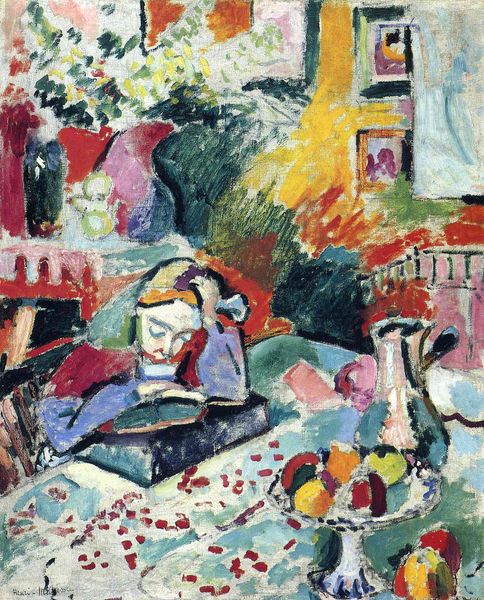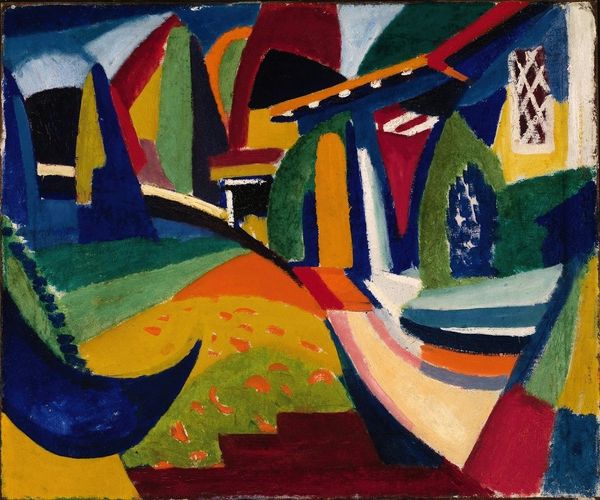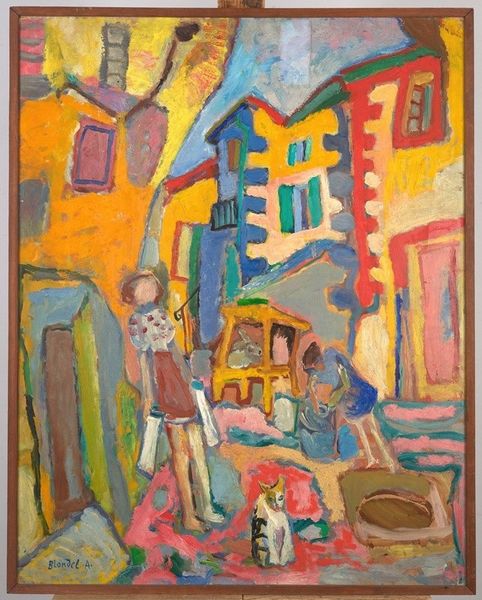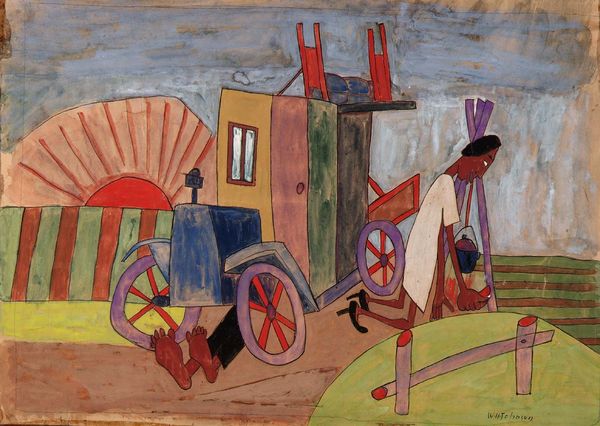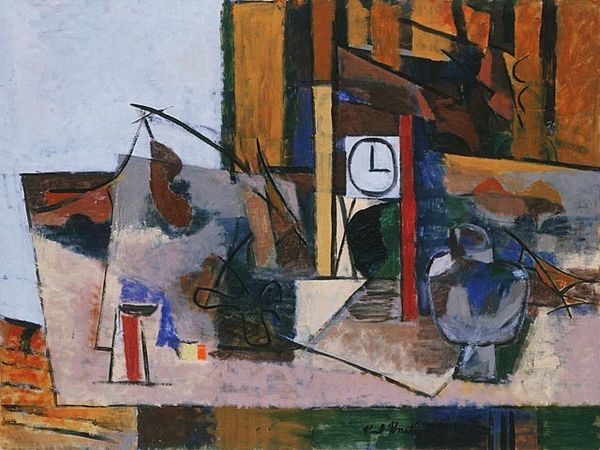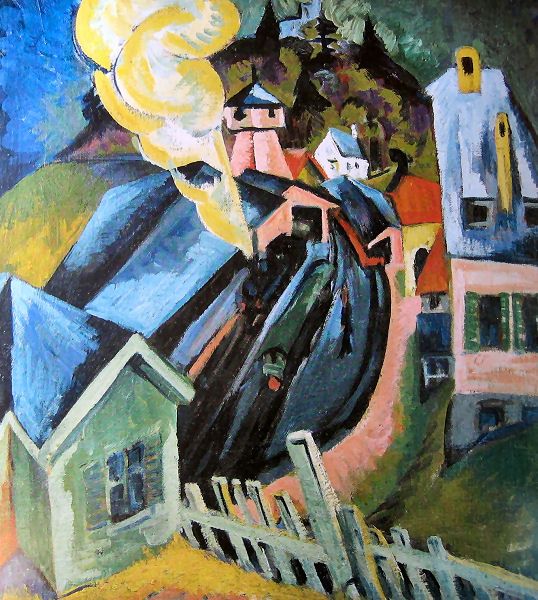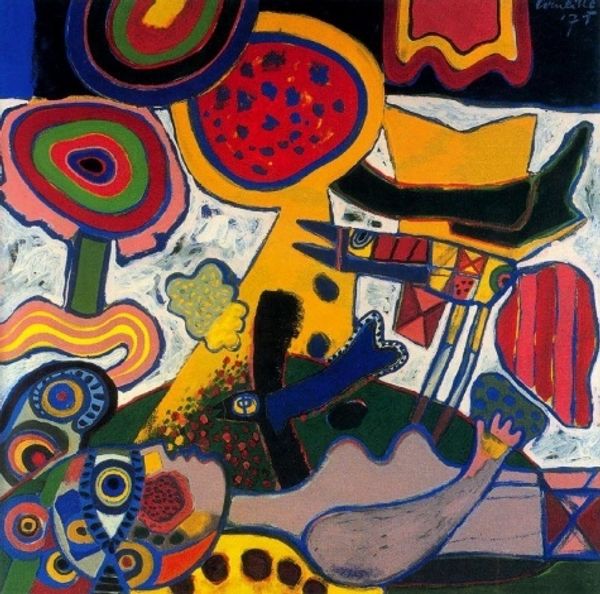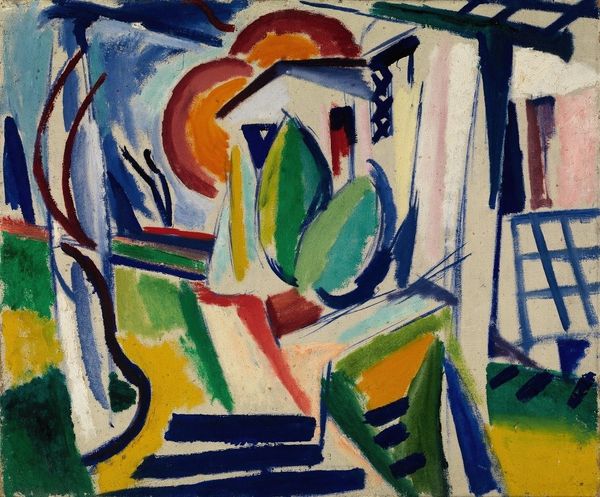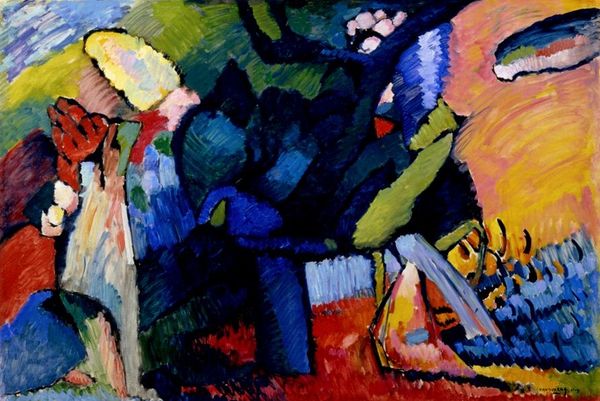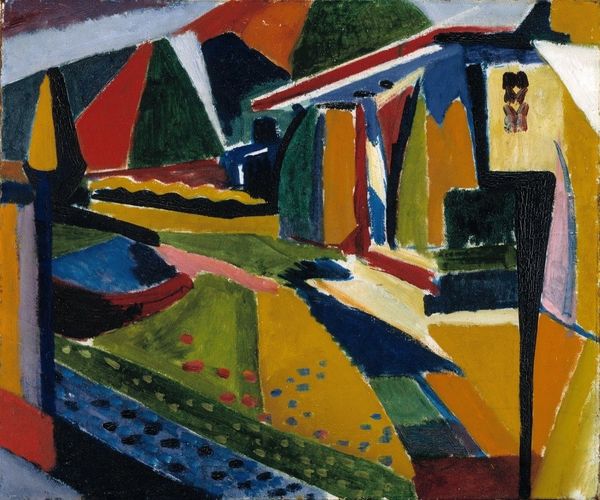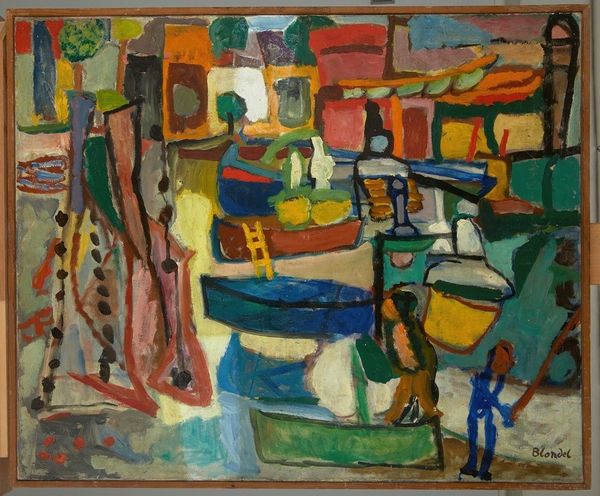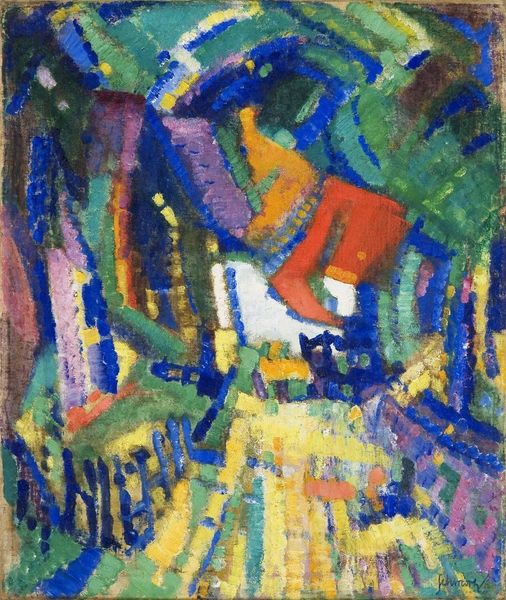
painting, oil-paint, impasto
#
cubism
#
abstract painting
#
narrative-art
#
painting
#
oil-paint
#
harlem-renaissance
#
figuration
#
handmade artwork painting
#
impasto
#
abstraction
#
cityscape
#
painting art
Copyright: Beauford Delaney,Fair Use
Curator: Upon viewing Beauford Delaney’s "Greene Street" from 1946, I'm immediately struck by its joyous, almost dreamlike quality. The colors are so vibrant and the forms, while hinting at reality, seem to dance on the canvas. Editor: It’s interesting that you see joy; I perceive a certain unease beneath the bright surface. Look at the figures – there's a sense of labor, a daily grind depicted with this very fractured, almost cubist lens. What are your thoughts on the potential societal context? Curator: Well, for me, the fracturing lends a feeling of dynamism rather than fragmentation, despite that reading holding potential weight. Considering Delaney's life during the Harlem Renaissance and his later expatriation to Paris, the symbol of a street – Greene Street itself, maybe any city thoroughfare– seems like a poignant motif. It holds layers of promise and disillusionment and references constant movement. What do you observe in these details? Editor: I agree with the sentiment of a ‘poignant motif’. I note the presence of what appears to be street vendors. In thinking of the Great Migration and African American urbanization, I find that Delaney depicts a layered reality. Consider, too, that his abstractions move beyond pure formalism. He uses figuration to grapple with very tangible socio-economic realities. Curator: Yes, absolutely. There’s such a depth in how Delaney used abstract and symbolic representation. The repeated forms evoke cultural memory. Street lamps are not just architectural fixtures. Carts signal trade and sustenance. Every symbol seems intentional, as though layers of memory infuse daily reality. It transforms what could be a mere snapshot into an exploration of social forces, class, and personal experience. It has a visual cadence – I wonder, did Delaney find continuity through rendering symbols or urban fixtures over time? Editor: A strong observation, and very insightful. The consistent abstraction alongside recognizable city elements suggests Delaney explored identity, alienation, and community bonds through visual language, indeed. Curator: The painting's vibrancy makes the analysis somewhat paradoxical – beauty born of difficult times. Thanks, this exchange has changed the way I appreciate Delaney's use of abstraction. Editor: Likewise. It makes you reconsider what is visible on Greene Street.
Comments
No comments
Be the first to comment and join the conversation on the ultimate creative platform.
